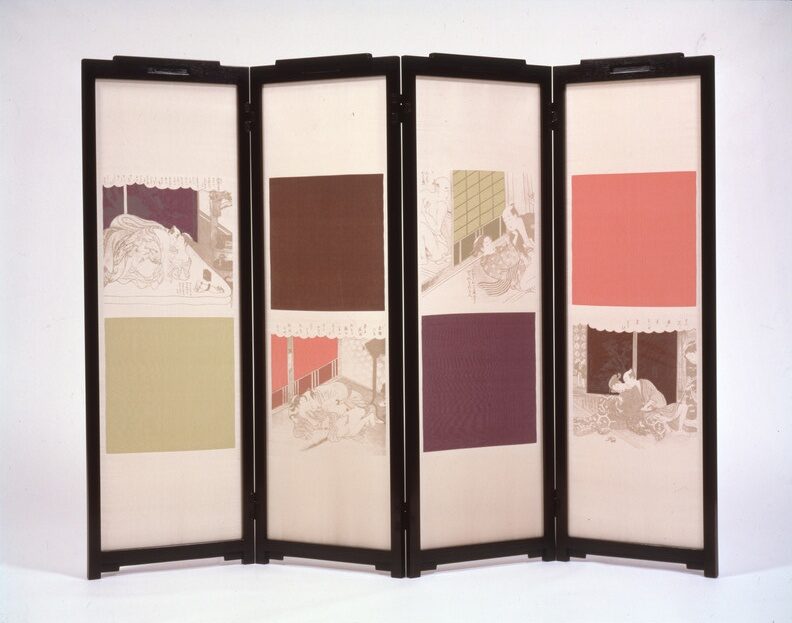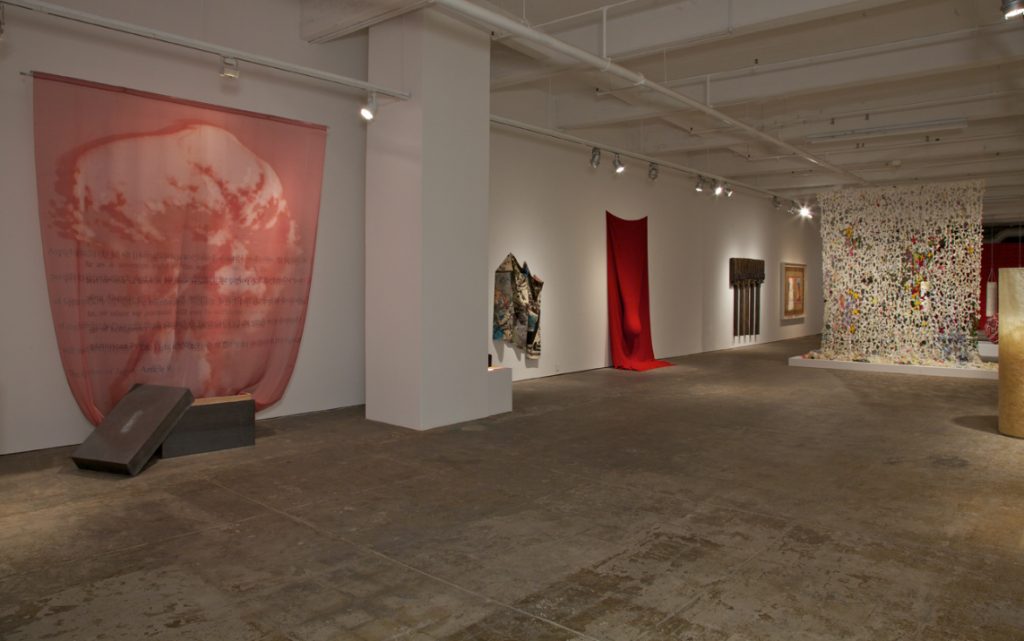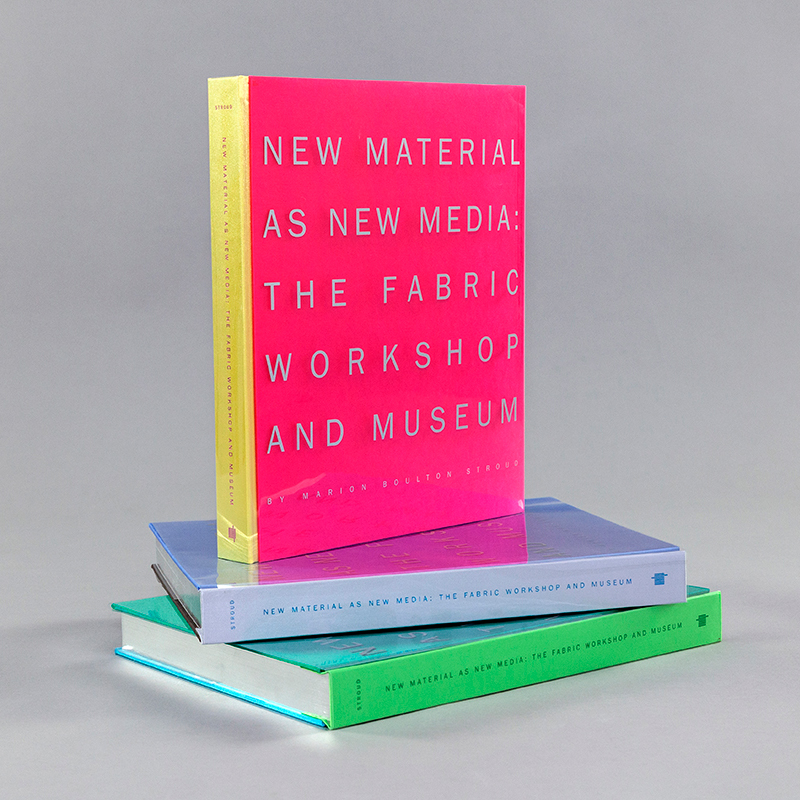Created in collaboration with FWM, Pictures from the Floating World is a set of two folding screens—one too short to be used comfortably, the other too tall. Bloom’s reference to the term “floating world” reflects a medieval Buddhist belief in the fleeting quality of the material world and its predictability as a source of suffering in life.
The screens are fabricated in the traditional Japanese style, with wooden frames and leather hinges. The four panels are made from silk, dyed the color of tea, and printed with images of classic Ukiyo-e prints—known as floating world prints— first produced in 17th century Japan. They are erotic images depicting men and women copulating; on the taller of the two screens, Bloom heightens their mystery by printing the erotica in pigment matching the color of the silk. Bloom then added black censorship dots and red blush to the cheeks of carefully selected male and female figures. The effect is a subtle image, visible only when the screen is lit from behind; otherwise, a repeating pattern of black and red dots is all that can be seen. This subtlety combined with the small scale of the images forces viewers to peer closely, acting as voyeurs to these intimate scenes. The shorter screen also depicts erotic images, which are silkscreen printed on silk in a soft palette of light pink, purple, green, and brown, also on a tea-colored background.
Bloom later created a more extensive installation also titled Pictures from the Floating World, of which the two screens were included. Other components included a Japanese wooden bridge, which stretched over a painted red floor with plaster casts of male and female heads “floating” by. On top of the bridge, Bloom placed a vitrine holding grains of rice, each printed with a minute erotic image, visible only with the magnifying lens provided.


